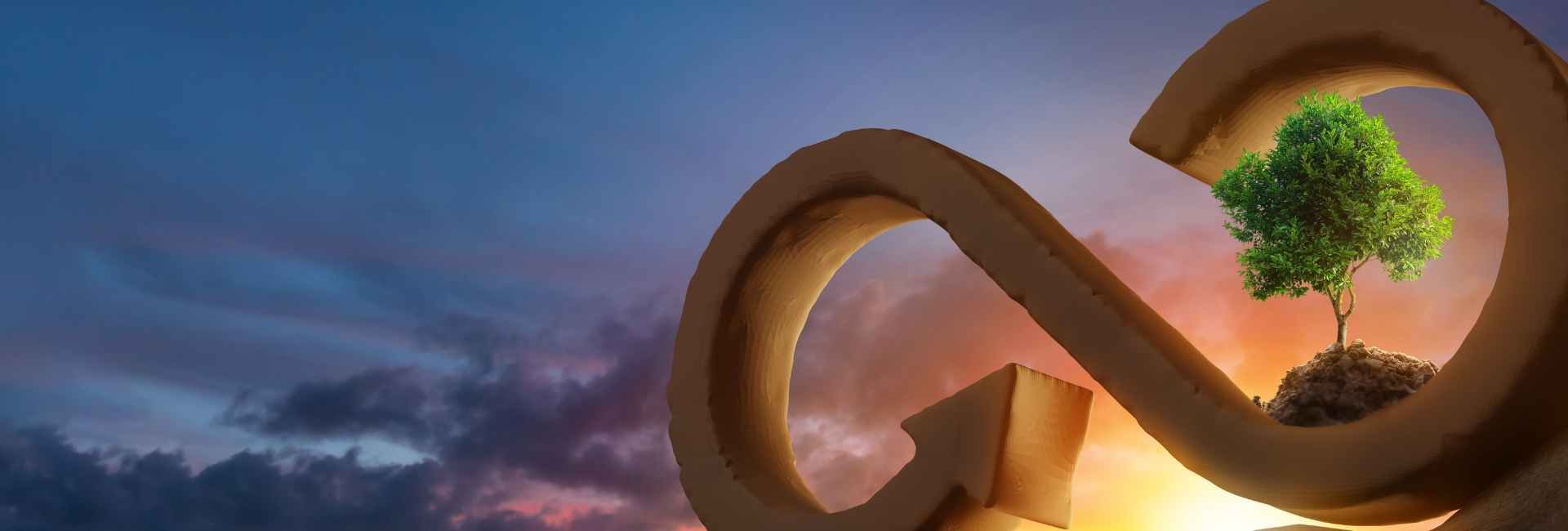Circular economies: a more sustainable future
renewable energy

renewable energy
One of the biggest concerns of the modern world is the reduction of industrial waste. The industrial revolution ramped up the amount of useless waste accrued through manufacturing and spurred the ever-increasing harnessing of natural resources to feed the manufacturing needs. This extraction process also generated waste (as by-products of useful materials were generated) such as the mounds of rock accrued from mining gold ore. To combat this waste of materials, the idea of the circular economy has been proposed and has already been taken onboard by governments, including the Australian government.
The aim of a circular economy is to keep everything in a useful loop, mitigating waste and prioritising recycling of materials. In current economies, resources and materials are intended for single use, which makes it difficult to establish sustainable practices. In a circular economy, materials are maintained, reused, refurbished, remanufactured, recycled and composted.
According to the European Parliament, a circular economy is “a model of production and consumption, which involves sharing, leasing, reusing, repairing, refurbishing and recycling existing materials and products as long as possible.”
According to University of Queensland’s Dr Glen Corder, Australia is in a good position to become a global leader in circular economies for the mining sector. By eliminating waste products from mining processes, Australia’s economics and environment can prosper, and Australia will be able to offer its expertise in waste mitigation to the rest of the world. Advances in technology will support Australia’s capacity to become a world leader in circular economies.
The three levels of government have created a National Waste Policy and Action Plan that will see Australia shift material use to a circular economy.
The National Waste Policy outlines five principles of waste management:
These principles are fundamental for the transition to a circular economy and are what the action plan are built on. The Action Plan focuses on:
Banning the export of waste plastic, paper, glass and tyres, (beginning 2020)
The plan complements and supports the implementation of better waste management and circular economy plans by state and territory governments, local government, business and industry. An example of local government’s dedication to waste management is Brisbane’s WasteSMART Awards, which honours individuals, community groups, businesses, and others who are dedicated to effectively managing waste and contributing towards a circular economy. Some of these year’s winners include:
WasteSMART Councillors’ Choice Award Winner: Queensland Children’s Hospital - QCH channels over 500,000kg of waste into 37 recycling streams, generating or saving over $1.8 million per year for QCH. The hospital’s organic waste strategy captures 85% of onsite food waste, composting about 22,000kg of food waste and sending 561kg of food to Oz Harvest.
WasteSMART Champions Award Winner: Hannah Churton: Hannah Churton, resident of the suburb Bardon in Brisbane, started a garden and compost hub to help redirect her neighbourhood’s organic waste. Last financial year, Hannah redirected over 6 tonnes of organic waste from landfill.
WasteSMART Business Award sponsored by Cleanaway Winner: Howard Smith Wharves – Howard Smith Wharves, Brisbane’s go-to spot for restaurants, cafes and bars, supplies food and beverages to a whole precinct. They have focused on ensuring that waste generated across the many outlets in the precinct is separated, segregated and recycled, and in the last financial year diverted 96% of its waste (over 4,523 tonnes) from landfill.
Researchers are currently working on establishing a circular economy. While they are not necessarily establishing a circular economy in one fell swoop, they are working on more atomised projects which could eventually build a circular economy from the ground up.
For example, researchers at RMIT University’s School of Engineering have developed a method for strengthening concrete by 30 per cent by using a substance from coffee grounds, which are a waste material. The researchers figured out that they can use biochar, which is the substance they extract from coffee grounds, to replace a portion of the sand which is traditionally used to make concrete. Biochar’s density is almost nine times lower than sand’s, meaning that less sand would be needed and therefore less sand needed to be extracted from the earth.
Research team leader Professor Jie Li stated that, “With a circular-economy approach, we could keep organic waste out of landfill and also better preserve our natural resources like sand.”
Claudio Reinhard, a Mechanical Engineering student at ETH Zurich, has also figured out how to extract and process antioxidants from olive waste, which can be useful in cosmetics and as natural additives in food. Producing just a single bottle of olive oil can produce waste equivalent to four bottles of olive peel, pulp, stones, and wastewater.
In an ETH Zurich statement, Reinhard stated that “Until now, 98 per cent of the antioxidants were simply thrown away,”
These are just some of the innovations that researchers have been working on, and we can feel confident that we will continue to see further innovations in the future.
It is clear that Australia is already dedicated to developing a circular economy, and that tremendous steps have already been taken. If the effects of these steps are positive, development can be assumed to move ahead at full steam, and we can expect more activities geared towards the development of a circular economy. Companies need to weigh up the pros and cons of recycling and develop their capacity to recycle based on their specific capacities, and governments need to continue to take steps to develop a circular economy which is holistic and built upon innovation by researchers and companies.
For over 25 years, Brunel has worked with innovators and leaders from Australia's resource and power generation industries to deliver both small and large-scale projects. Speak with our renewable energy experts today and discover how Brunel can help meet your personnel and project needs.